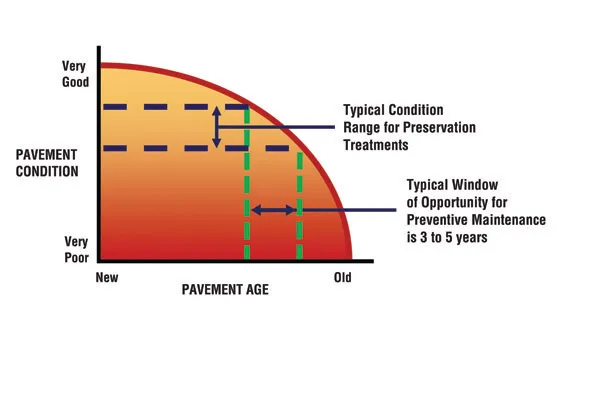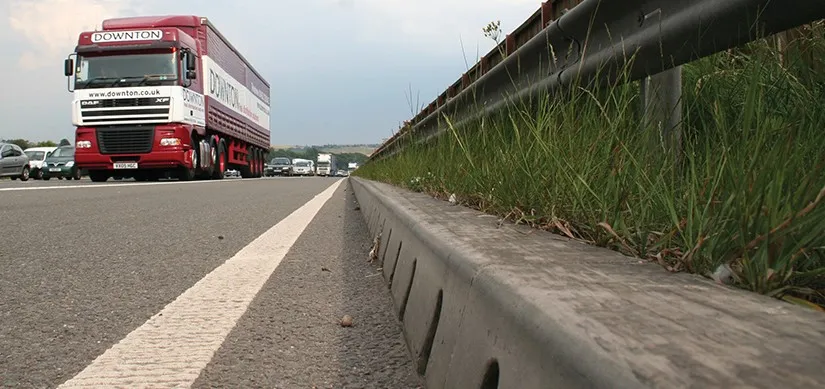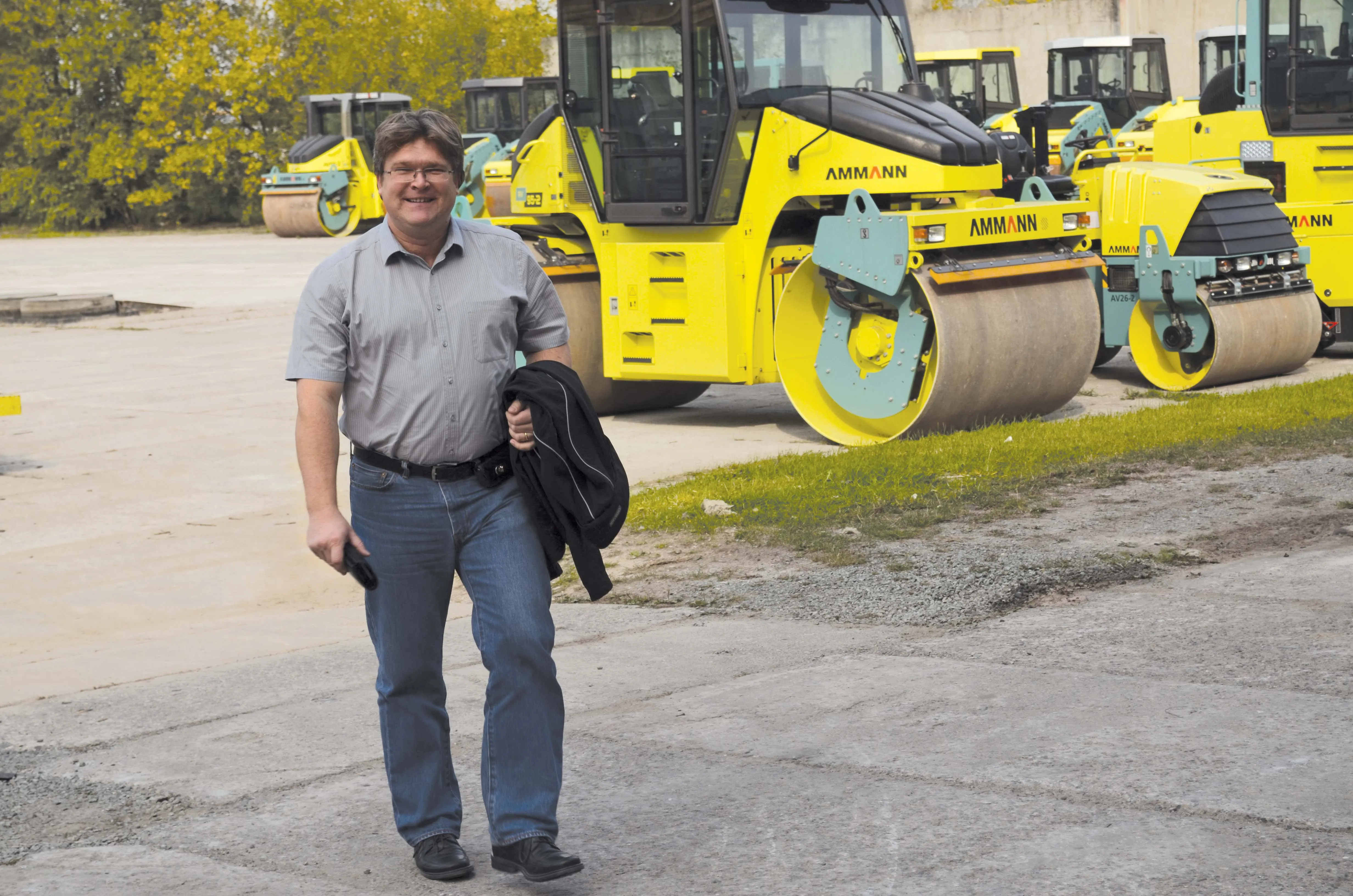This is the final section of a three-part series about preventive maintenance for pavements. Written by Alan S. Kercher, P.E., Kercher Engineering, Inc
We practice preventive maintenance in our everyday lives and possibly with agency equipment such as dump trucks and backhoes, but when it comes to maintaining our roadways, most agencies will always defer repairs until the pavements have failed, resulting in very expensive repairs. This article will provide some guidance to help an agency make the switch fr
April 12, 2012
Read time: 6 mins

This is the final section of a three-part series about preventive maintenance for pavements. Written by Alan S. Kercher, P.E., Kercher Engineering, Inc
We practice preventive maintenance in our everyday lives and possibly with agency equipment such as dump trucks and backhoes, but when it comes to maintaining our roadways, most agencies will always defer repairs until the pavements have failed, resulting in very expensive repairs. This article will provide some guidance to help an agency make the switch from a reactive "worst-first" mentality to a pro-active "best-first" approach.Although it is a proven fact that pavement preservation is the most cost-effective long term method of managing a pavement network, few local agencies have successfully implemented such a program. Success requires that an agency implement the 3 Rs (the Right Treatment at the Right Place at the Right Time) approach. This will require the decision makers to have a clear understanding of the current condition of the pavements and the longterm consequences associated with different levels of funding. Additionally, all pavement improvement projects must be designed and constructed properly. In order to gain support of the community at large, the public must be educated as to why pavement preservation is the most cost-effective long-term approach to managing any pavement network.
The following is a brief discussion of six important issues that must be addressed in order to implement a successful Pavement Preservation Program.
I. The 3 Rs: The Right Treatment at the Right Place at the Right Time For any pavement preservation program to be successful, the right treatment must be applied at the right place at the right time. Crack sealing and surface treatments will not be costeffective if applied to a severely deteriorated pavement. All agencies need to take the following steps: 1. Select the right treatment - in order to utilise the most cost-effective treatment, agencies must take advantage of the many types of repair treatments that are available today. Every agency should try to utilise the entire maintenance and repair toolbox (see Part 2 of this Series). This includes patching, crack sealing, surface treatments (including chip seals, micro-surfacing and ultra-thin bonded overlays), overlays, as well as recycling techniques such as cold in-place recycling and full depth reclamation. However, for any of these treatments to be cost-effective, trained personnel should be utilised to determine under what conditions each treatment is appropriate.
2. Select the right road - pavement conditions must be evaluated in order to determine which streets are good candidates for each type of maintenance or repair treatment. This is typically accomplished by performing a pavement condition survey. The survey should include the evaluation of distresses such as structural and environmental cracking, material defects/aging, rutting, roughness, drainage and possibly safety issues (i.e. skid resistance).
3. Timing is everything - since there is a relatively short amount of time when preservation treatments can be cost-effectively utilised, proper timing is crucial to a successful pavement preservation program. See Figure 1.
II. Implement a Pavement Management System It can be a daunting task to keep track of the current pavement condition of each road, knowing what should be done to it, how much it will cost and when it should be repaired. Fortunately, pavement management systems are available to assist agencies in managing these costly assets. Pavement management systems will provide a systematic approach to gathering and analysing data, as well as developing long-term budget plans and presenting information in a clear, logical manner so that decision makers will understand the long term consequences of today's budgeting decisions.
Benefits of a pavement management system include:
• Contains a database with powerful analytical and optimisation tools
• Provides strong report generating and mapping (w/GIS) capabilities
• Generates long-term budgets based upon different levels of funding and "worst-first" vs.
"best-first" funding scenarios
• Creates a historical database that allows for tracking of "performance" over time
• If properly implemented, it will allow an agency to select the right treatment at the right place at the right time.
III. Developing Long-Term Budgets From a long-term theoretical standpoint, the best-first policy is the most cost-effective method of managing a roadway network. In the real world, however, it is not realistic to expect the entire budget to be spent on the streets in good condition. Most elected officials and the public would quickly disregard anyone who would suggest such a crazy plan. However, not attempting to change from a "worst-first" policy to a "best-first" policy is cheating the public.
Therefore, a compromise is necessary. In most cases, an agency should start slowly and build up a preventive maintenance program over time. For example, possibly allocate 10% to 20% of the budget in the first year towards preventive maintenance and increase by five to ten percent each year thereafter until a costeffective balance is reached.
IV. Proper Engineering Once a network-level budget is developed, trained personnel must investigate each of the streets selected and determine the full scope of work necessary for a successful project.
This includes identifying all work including crack sealing, patching, rut-filling and leveling courses necessary to ensure that the project will be successful.
Thorough contract documents must be prepared by someone experienced in writing contract documents and is knowledgeable about the type of construction activities to be covered by the documents. Quality construction starts with properly written contract documents that create a level playing field which allows the "quality conscious" contractors to have a fair shot at winning the bid. Additionally, contract documents create the "set of laws" which will govern the construction project. Weak contract documents make enforcement of proper construction techniques, as well as conflict (dispute) resolution very difficult.
V. Quality Construction Construction inspection is necessary in order to ensure that the contractor is meeting the requirements set forth in the contract documents. Having welltrained, knowledgeable inspectors present during construction will definitely help to minimise problems and will provide reliable documentation of what actually happened during the project.
VI. Public Relations Pavement preservation is founded on maintaining the streets that are in relatively good condition, not just simply spending all of the available funds on the few roads that are in the worst condition. To the average citizen, many of the roads to be repaired as part of a preservation program will appear to be in relatively good shape. As such, this new approach will most likely result in citizens complaining that money is being "wasted" on streets that are in good condition while other streets in worse condition aren't being repaired.
Minimising the number of complaints will require that the road agency educate the public in the wisdom of pavement preservation.








